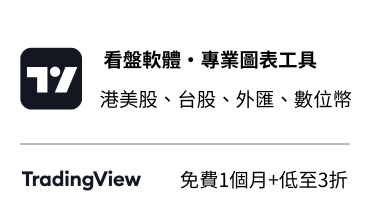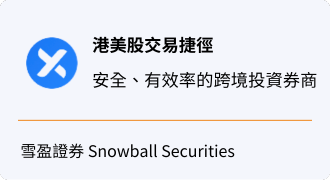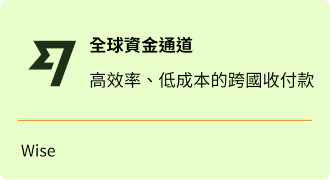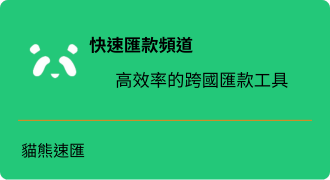全方位斜率(上):掌握跨時間跨市場的趨勢洞察
[免責聲明] 本文僅供教育和資訊目的,不構成投資建議。讀者在做出任何投資決定前應諮詢合格的金融專業人士。
在量化交易領域深耕多年,我發現市場趨勢猶如一條奔騰的河流,有主流,也有支流。要全面掌握市場動態,單一時間框架或單一市場的分析往往不夠。今天,讓我們一起探討如何透過多維度斜率分析,在不同時間尺度和市場之間尋找趨勢的共鳴。
① 時間框架的本質:從分鐘到月度的斜率差異
作為一個長期從事量化交易研究的分析師,我常常被問到:"為什麼同一隻股票,在不同時間框架下的趨勢看起來如此不同?"這個問題引出了我們今天要深入探討的第一個主題:時間框架的本質。
在前兩篇文章中,我們詳細討論了斜率的基本概念和高階計算方法。今天,我們要將這些知識應用到更廣闊的視野中。不同時間框架下的斜率差異,實際上反映了市場參與者在不同時間尺度上的行為特徵。
讓我們透過一個具體的例子來理解這一點:
import pandas as pd
import numpy as np
import matplotlib.pyplot as plt
def calculate_slopes_multiple_timeframes(price_data, timeframes=['1H', '4H', '1D']):
"""
計算不同時間框架下的斜率
參數:
price_data: 原始價格資料(假設為分鐘等級)
timeframes: 需要計算的時間框架列表
"""
results = {}
for tf in timeframes:
# 重採樣數據
resampled = price_data.resample(tf).agg({
'open': 'first',
'high': 'max',
'low': 'min',
'close': 'last'
})
# 計算斜率(使用20個週期的視窗)
slopes = pd.Series(index=resampled.index)
window = 20
for i in range(window, len(resampled)):
y = resampled['close'].iloc[i-window:i]
x = np.arange(window)
slope, _ = np.polyfit(x, y, 1)
slopes.iloc[i] = slope
results[tf] = slopes
return results
這個函數幫助我們理解同一市場在不同時間框架下的斜率特徵。有趣的是,我們常發現:
- 短期時間框架(如分鐘等級)的斜率波動更加劇烈,反映了市場的短期噪音。
- 中期時間架構(如小時等級)的斜率更能反映當前的主導趨勢。
- 長期時間框架(如日線、週線)的斜率則顯示了市場的基本面走勢。
然而,這些不同時間框架的斜率並非孤立存在。正如河流中的支流最終匯入主流,不同時間框架的趨勢也存在著內在的連結。在下一節中,我們將探討如何協調和整合這些不同時間尺度的資訊。
② 多時間框架斜率分析法
在了解不同時間框架的特性後,關鍵問題是如何有效地整合這些資訊。這就像觀察一幅畫,我們既需要看到整體構圖(長期趨勢),也要注意局部細節(短期波動)。
2.1 時間框架協調:確保資料一致性
首先,讓我們看看如何確保不同時間框架資料的一致性:
def align_timeframe_data(hourly_data, timeframes=['1h', '4h', '1d']):
"""
協調不同時間框架的數據,以小時數據為基礎
參數:
hourly_data: 小時級基礎資料('1H')
timeframes: 需要分析的更大時間框架列表
返回:
DataFrame: 包含所有時間框架斜率的對齊數據
"""
aligned_slopes = {}
# 計算較大時間框架的斜率
for tf in timeframes:
# 重採樣數據
resampled = hourly_data.resample(tf).agg({
'close': 'last',
'volume': 'sum'
}).dropna()
# 計算標準化斜率
slopes = calculate_normalized_slope(resampled['close'], window=20)
# 將斜率資料對齊到小時框架
if tf == '1h':
aligned_slopes[tf] = slopes
else:
# 將斜率資料對齊到小時框架
aligned_slopes[tf] = slopes.reindex(aligned_slopes['1h'].index, method='ffill')
return pd.DataFrame(aligned_slopes)
def calculate_normalized_slope(prices, window=20):
"""
計算標準化斜率
"""
slopes = pd.Series(index=prices.index)
price_std = prices.rolling(window).std()
for i in range(window, len(prices)):
y = prices.iloc[i-window:i]
x = np.arange(window)
slope, _ = np.polyfit(x, y, 1)
# 使用標準差標準化斜率
slopes.iloc[i] = slope / price_std.iloc[i] if price_std.iloc[i] != 0 else 0
return slopes
# 使用範例
# 取得對齊的斜率數據
aligned_slopes = align_timeframe_data(hourly_data)
print(f"數據形狀: {aligned_slopes.shape}")
print("\n每個時間框架的非空值數量:")
print(aligned_slopes.count())
# 顯示5月份對齊的斜率數據
monthly_mask = (aligned_slopes.index.year == 2024) & (aligned_slopes.index.month == 5)
aligned_slopes[monthly_mask].plot()

這個方法的關鍵在於:
- 使用標準化處理,使不同時間框架的斜率具有可比性
- 透過重採樣和資料對齊,確保不同時間框架的資料在時間上同步
- 考慮了成交量信息,增加分析維度
2.2 斜率疊加技術:綜合不同時間尺度的趨勢
現在,讓我們看看如何將不同時間框架的斜率資訊整合起來:
def composite_slope_indicator(aligned_slopes, weights={'1h': 0.3, '4h': 0.3, '1d': 0.4}):
"""
建立綜合斜率指標
參數:
aligned_slopes: 對齊後的各時間框架斜率數據
weights: 各時間框架的權重
"""
composite = pd.Series(0, index=aligned_slopes.index)
for tf, weight in weights.items():
composite += aligned_slopes[tf] * weight
return composite
# 取得組合的斜率數據
composite_slope = composite_slope_indicator(aligned_slopes)
# 顯示5月份的組合斜率數據
composite_slope[monthly_mask].plot()

这个综合指标有几个显著特点:
- 权重可调:可以根据交易策略调整不同时间框架的权重
- 信号确认:多个时间框架的趋势一致时,信号更可靠
- 冲突识别:当不同时间框架的趋势出现分歧时,提供预警
在实践中,我发现这种多时间框架的分析方法能够帮助我们:
- 更好地识别主导趋势
- 找到更合适的入场点
- 降低假信号的影响
但需要注意的是,随着分析维度的增加,我们也面临着更复杂的信号解释问题。这个挑战将在本文后面的部分详细讨论。值得一提的是,在下一篇文章中,我们将探讨如何将这些分析转化为具体的交易策略。
③ 跨市场斜率相关性
在金融市场中,不同市场之间的联系就像是一张无形的网。作为一个资深量化分析师,我发现斜率分析在揭示这些市场关联性方面有着独特的优势。
3.1 外汇对与商品的斜率关系
让我们先来看一个经典的例子 - EUR/USD与黄金价格的关系:
def analyze_cross_market_slopes(market1_data, market2_data, window=30):
"""
分析兩個市場之間的斜率相關性
參數:
market1_data, market2_data: 兩個市場的價格數據
window: 計算斜率和相關性的視窗大小
"""
# 計算兩個市場的標準化斜率
slopes1 = calculate_normalized_slope(market1_data, window)
slopes2 = calculate_normalized_slope(market2_data, window)
# 將斜率資料合併成DataFrame並對齊數據
combined_slopes = pd.DataFrame({
'slopes1': slopes1,
'slopes2': slopes2
})
# 刪除含有空值的行
combined_slopes = combined_slopes.dropna()
# 列印調試資訊
print("\n資料處理前:")
print("Slopes1 shape:", slopes1.shape)
print("Slopes2 shape:", slopes2.shape)
print("NaN in slopes1:", slopes1.isna().sum())
print("NaN in slopes2:", slopes2.isna().sum())
print("\n數據處理後:")
print("Combined shape:", combined_slopes.shape)
print("NaN in combined data:", combined_slopes.isna().sum().sum())
# 計算滾動相關性
correlation = combined_slopes['slopes1'].rolling(window).corr(combined_slopes['slopes2'])
# 計算領先-滯後關係
lead_lag = pd.DataFrame(index=combined_slopes.index)
for lag in range(-5, 6):
if lag > 0:
shifted_slopes2 = combined_slopes['slopes2'].shift(lag)
corr = combined_slopes['slopes1'].rolling(window).corr(shifted_slopes2)
else:
shifted_slopes1 = combined_slopes['slopes1'].shift(-lag)
corr = shifted_slopes1.rolling(window).corr(combined_slopes['slopes2'])
lead_lag[f'lag_{lag}'] = corr
print("\n結果統計:")
print("Correlation NaN count:", correlation.isna().sum())
print("Total periods in correlation:", len(correlation))
return correlation, lead_lag
def visualize_cross_market_analysis(correlation, lead_lag):
"""
可視化跨市場分析結果
參數:
correlation: 相關性時間序列
lead_lag: 領先-滯後關係DataFrame
"""
# 建立具有共享x軸的子圖
fig, (ax1, ax2) = plt.subplots(2, 1, figsize=(12, 8), sharex=True)
# 繪製相關性時間序列
ax1.plot(range(len(correlation)), correlation.values, label='相關性')
ax1.set_title('斜率相關性隨時間的變化')
ax1.axhline(y=0, color='r', linestyle='--', alpha=0.3)
ax1.grid(True)
ax1.set_ylabel('相關性')
# 設定第一個圖的x軸刻度
n_ticks = 5 # 設定想要顯示的刻度數量
step = len(correlation) // (n_ticks - 1)
tick_positions = np.arange(0, len(correlation), step)
tick_labels = correlation.index[::step]
ax1.set_xticks(tick_positions)
ax1.set_xticklabels(tick_labels, rotation=45)
# 繪製領先-滯後熱圖
im = ax2.imshow(lead_lag.T,
aspect='auto',
extent=[0, len(lead_lag), -5.5, 5.5],
cmap='RdBu_r',
interpolation='nearest')
# 設定第二個圖的x軸刻度(與第一個圖相同)
ax2.set_xticks(tick_positions)
ax2.set_xticklabels(tick_labels, rotation=45)
# 設定y軸標籤
ax2.set_ylabel('領先/滯後週期')
ax2.set_title('領先-滯後關係分析')
# 新增色條
plt.colorbar(im, ax=ax2, label='相關性強度')
# 調整佈局
plt.tight_layout()
return fig
def enhanced_visualize_cross_market_analysis(correlation, lead_lag,
title=None,
show_threshold=False,
threshold=0.5):
"""
增強版視覺化函數
"""
# 建立具有共享x軸的子圖
fig, (ax1, ax2) = plt.subplots(2, 1, figsize=(12, 8), sharex=True)
if title:
fig.suptitle(title, y=1.02, fontsize=14)
# 繪製相關性時間序列
ax1.plot(range(len(correlation)), correlation.values, label='相關性')
ax1.set_title('斜率相關性隨時間的變化')
ax1.axhline(y=0, color='r', linestyle='--', alpha=0.3, label='零線')
if show_threshold:
ax1.axhline(y=threshold, color='g', linestyle='--', alpha=0.3, label=f'閾值 ({threshold})')
ax1.axhline(y=-threshold, color='g', linestyle='--', alpha=0.3)
ax1.grid(True)
ax1.set_ylabel('相關性')
ax1.legend()
# 設定第一個圖的x軸刻度
n_ticks = 5 # 設定想要顯示的刻度數量
step = len(correlation) // (n_ticks - 1)
tick_positions = np.arange(0, len(correlation), step)
tick_labels = correlation.index[::step]
ax1.set_xticks(tick_positions)
ax1.set_xticklabels(tick_labels, rotation=45)
# 繪製領先-滯後熱圖
im = ax2.imshow(lead_lag.T,
aspect='auto',
extent=[0, len(lead_lag), -5.5, 5.5],
cmap='RdBu_r',
interpolation='nearest')
# 設定第二個圖的x軸刻度(與第一個圖相同)
ax2.set_xticks(tick_positions)
ax2.set_xticklabels(tick_labels, rotation=45)
# 設定y軸標籤和刻度
ax2.set_ylabel('領先/滯後週期')
ax2.set_yticks(np.arange(-5, 6))
ax2.set_title('領先-滯後關係分析')
# 新增色條
cbar = plt.colorbar(im, ax=ax2)
cbar.set_label('相關性強度')
# 調整佈局
plt.tight_layout()
return fig
# 獲得兩個品種的斜率相關性
correlation_analyze, analyze_lead_lag = analyze_cross_market_slopes(resampled_df1['close'], resampled_df2['close'])
# 只顯示5月的相關性圖表
monthly_mask3 = (correlation_analyze.index.year == 2024) & (correlation_analyze.index.month == 5)
analyze_lead_lag3 = (analyze_lead_lag.index.year == 2024) & (analyze_lead_lag.index.month == 5)
fig = visualize_cross_market_analysis(correlation_analyze[monthly_mask3], analyze_lead_lag[analyze_lead_lag3])
plt.show()

透過這個分析,我們可以發現一些有趣的現象:
- EUR/USD與黃金價格的斜率相關性往往在特定的市場環境下會顯著增強
- 這種相關性可能存在領先-滯後關係,為預測提供了可能性
- 相關性的突然變化可能預示著市場環境的轉變
3.2 股指與個股斜率的聯繫
在股票市場中,個股與大盤之間的斜率關係同樣值得研究:
這種分析方法幫助我們:
- 辨識個股的獨特走勢
- 發現潛在的alpha機會
- 優化投資組合的風險管理
值得注意的是,這些跨市場關係並非一成不變。在我們的下一篇文章中,我們將探討如何將這些關係整合到實際的交易策略中。現在,讓我們繼續深入研究如何開發更複雜的多維度斜率指標。







